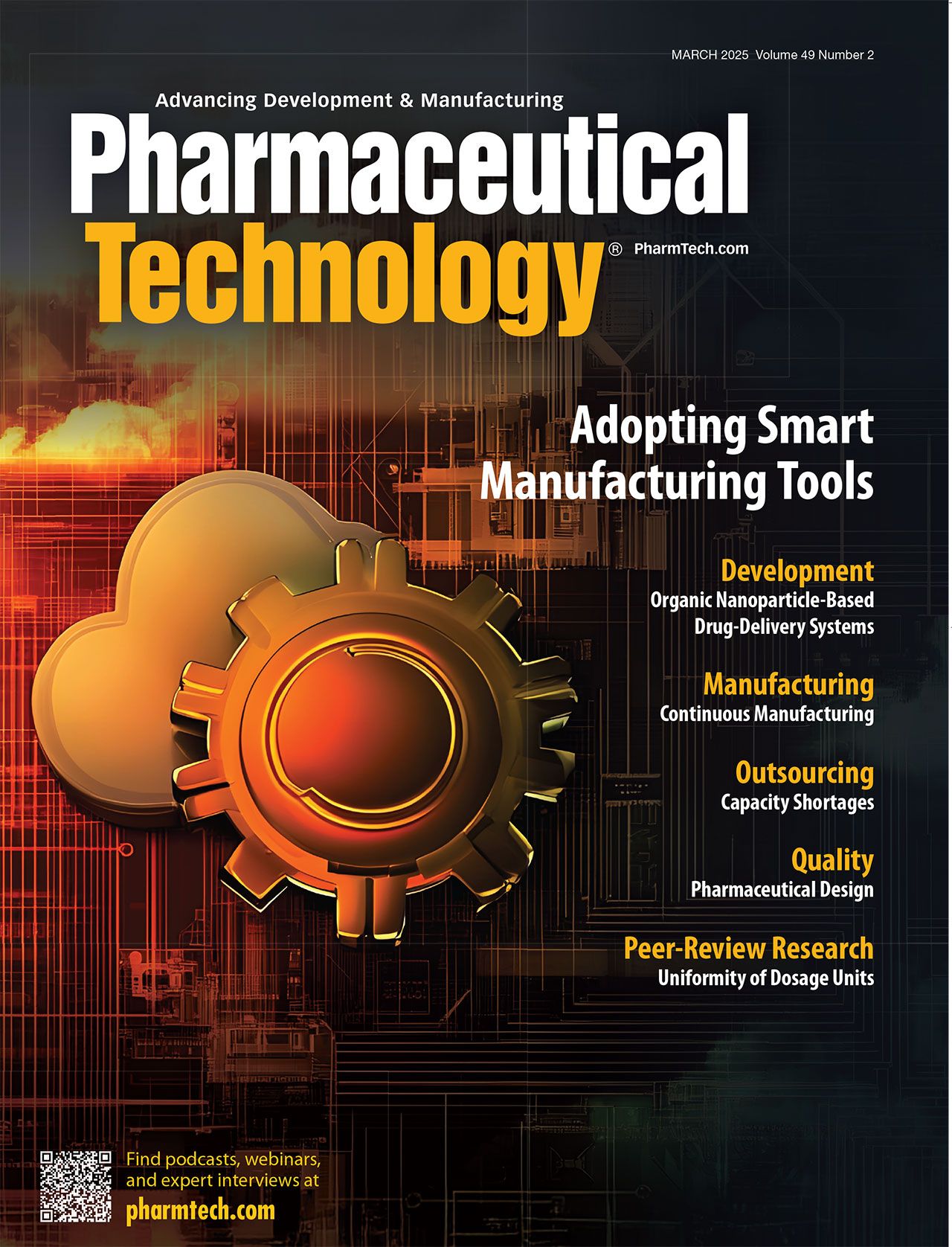Adopting Flexible Strategies to Combat Capacity Shortages
More and more contract manufacturers have been looking not at what the state of the supply chain is right now, but what it may be in the next three to five years.
Business cooperation strategy to create value for customers achieve the goal. | Image Credit: © Thanadon88 - stock.adobe.com

In January 2025, Samsung Biologics signed a six-year, $1.4 billion contract manufacturing agreement with an as-yet undisclosed European pharmaceutical company, with production to take place at Samsung’s manufacturing site in Songdo, South Korea (1). Simultaneously, at the J.P. Morgan Healthcare Conference held in San Francisco, the company announced plans to complete construction of its fifth biomanufacturing plant, housed on a new campus—both scheduled to open in April 2025—and said it was considering construction of a sixth plant in response to growing market demands (2).
Even with its newly minted pharma partnership in hand, Samsung said the fifth plant would raise its global biomanufacturing capacity by 180,000 L to a total of 784,000 L, and the sixth plant would push that figure to 964,000 L. Such is the crunch that companies are feeling early in 2025 when it comes to capacity concerns and drug shortages these companies are trying to quickly and efficiently address.
John McQuaid, president and managing director of Almac Pharma Services, summarized just a few of those concerns in an interview with Pharmaceutical Technology® at CPHI Milan in October 2024.
“There's never been a larger number of molecules in clinical development, and we're certainly seeing that increasing demand,” McQuaid said in the interview (3). “We've got demand in areas such as [highly] potent [APIs], [and] age-appropriate formulations, such as pediatrics. We've got poorly soluble compounds, and the need for technologies to address that. And then we've got personalized medicines, such as, … cell and gene therapies, which drive particular needs in areas such as fill/finish and cold chain requirements.”
McQuaid added that the rise of glucagon-like peptide-1 (GLP-1) drugs are especially driving demand and, accordingly, stress about the supply chain.
As explained by Kevin Li, MBA, chief marketing officer at BioDuro-Sundia, who also spoke to Pharmaceutical Technology® at CPHI Milan, outsourcing strategy can take one of two paths: a “traditional” approach in which a bio/pharmaceutical company splits up its program and partners with one or more contract development and manufacturing organizations (CDMOs) and a separate contract research organization (CRO), or an integrated model—which can be looked at as either horizontal, with a partner providing services from discovery to development and commercial manufacturing, or vertical, integrating medicinal chemistry, biology, and drug metabolism and pharmacokinetics starting with the discovery phase into development (4).
“One side can handle both drug substance and drug product, and one side can handle the pre-formulation, formulation development, until commercial manufacturing, everything in one side,” Li told Pharmaceutical Technology®. “It's very difficult and time-consuming to manage multiple vendors, and if you do integrate the program with one vendor ... that's much easier, simpler to manage the process to avoid any potential interruptions.”
The 2024 CPHI Annual Report, which was fully released at CPHI Milan, suggested that trends may shift dramatically by the beginning of 2028 (5). The report said contract manufacturing organizations (CMOs) and hybrid companies, which have their own pipelines and contract services for using spare capacity, will grow to hold 54% of global biologics capacity within the next three years beginning with 2025. Capacity for new clinical products entering development, according to the report, may not be easily accessible in the United States—despite capacity being available—and Europe and Asia may account for up to 75% of all CMO resources available by 2028.
“We see many more biotechs and early-stage companies now attending [CPHI Europe] to find suitable capacity—particularly for small production runs where they are more likely to partner with one of the hundreds of smaller CDMO partners. Helping find these ‘perfect fits’ is vital,” said Tara Dougal, Brand & Content director—Pharma, Informa, in a press release announcing the CPHI report (5).
The following is a brief recap of company activity announced in the fourth quarter of 2024 that illustrates some strategic responses to capacity shortage concerns both internally and between partner organizations:
- In November 2024, Ascend Advanced Therapies announced a partnership with EW Healthcare Partners with the intention of expanding capabilities and invest in infrastructure in the US, as a condition of which EW Healthcare’s Advanced BioScience Laboratories (ABL), a biotherapy, oncolytic, and viral vector CDMO in Rockville, Md., became part of Ascend (6). ABL’s facilities provide good manufacturing practice capacity for adeno-associated virus production, and Ascend’s fill/finish capacity in the US is also being expanded.
- Also in November 2024, SEKISUI Diagnostics, headquartered in Burlington, Mass., completed a £15.7 million (US$20.7 million) expansion of current good manufacturing practice capacity at the Maidstone, UK site of its microbial CDMO, BioProduction by SEKISUI (7). “We look forward to working with biopharma companies seeking an experienced partner at a time when demand is outstripping manufacturing capacity,” Robert Schruender, president and CEO of SEKISUI Diagnostics, said in a press release at the time.
- Finally, in December 2024, Israel-based biopharmaceutical company Scinai Immunotherapeutics, which develops inflammation and immunology biological products, announced the establishment of a US-based subsidiary, located in Delaware, for its CDMO services, operating under the same name as its Scinai Bioservices business unit (8). At the same time, Scinai signed its first contract with a US customer, Serpin Pharma of Manassas, Va., to support their clinical manufacturing.
What drugs may be in highest demand by 2028 or 2030 will ultimately drive the strategy of how bio/pharmaceutical companies seek and select outsourcing partners, but for 2025, easing the strain on the supply chain is the foremost priority.
References
1. Samsung Biologics. Samsung Biologics Signs Manufacturing Deal with Europe-Based Pharma. Fact Sheet. Jan. 13, 2025.
2. Samsung Biologics. Samsung Biologics Presents Business Updates at 2025 J.P. Morgan Healthcare Conference. Press Release. Jan. 15, 2025.
3. Thomas, F. CPHI Milan 2024: Pharma Industry Growth and Investment. PharmTech.com, Oct. 11, 2024.
4. Thomas, F. CPHI Milan 2024: Highlighting the Benefits of Integrated Services. PharmTech.com, Oct. 25, 2024.
5. Mirasol, F. CMOs and Hybrid Companies Predicted to Hold 54% of Biologics Capacity in 2028, According to CPHI Annual Survey. PharmTech.com, Oct. 8, 2024.
6. Ascend. Ascend Advanced Therapies Partners with EW Healthcare Partners to Expand United States Capacity and Capabilities. Press Release. Nov. 12, 2024.
7. SEKISUI Diagnostics. SEKISUI Completes £15.7 Million Expansion in cGMP Biopharma CDMO Capacity. Press Release. Nov. 14, 2024.
8. Scinai Immunotherapeutics. Scinai Immunotherapeutics Establishes US Subsidiary for CDMO Business Unit, Scinai Bioservices Inc. Press Release. Dec. 16, 2024.
About the author
Patrick Lavery is an Editor for Pharmaceutical Technology®.
Article details
Pharmaceutical Technology®
Vol. 49, No. 2
March 2025
Page: 32
Citation
When referring to this article, please cite it as Lavery, P. Adopting Flexible Strategies to Combat Capacity Shortages. Pharmaceutical Technology 2025 49 (2).

PacBio Chosen as Tech Partner for Global Alzheimer’s Disease Research Project
April 23rd 2025The project, the North African Dementia Registry, will unite multiple entities for the purpose of developing a comprehensive dataset to advance the research community’s understanding of Alzheimer’s disease and other dementias in diverse populations.